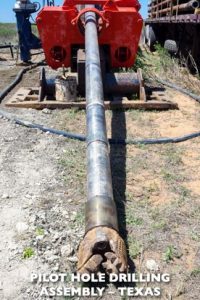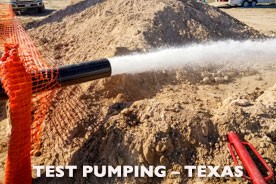| It has long been recognized that horizontal wells allow significantly more screen to be placed into the production zone of a thin aquifer than vertical wells. But so few horizontal wells have been installed for water supply, that municipalities and industry has been hesitant to apply the technology. Directed Technologies Drilling (DTD) is transforming this market, and has recently completed two water supply projects of note.
 Texas – DTD was contracted to install a horizontal water supply well for use at a power plant. The well, completed in July of 2017 is 2,300 feet long with 500 feet of screen set at 190 feet below ground surface. For this installation, a continuous (entry/exit) drilling method was used, with the screen and casing pulled into the borehole in tension. The well screen is twelve-inch diameter steel, specially designed to have the required strength to withstand the rigors of the installation. The custom screen can be generally described as a pipe-based, wire-wrapped screen. Texas – DTD was contracted to install a horizontal water supply well for use at a power plant. The well, completed in July of 2017 is 2,300 feet long with 500 feet of screen set at 190 feet below ground surface. For this installation, a continuous (entry/exit) drilling method was used, with the screen and casing pulled into the borehole in tension. The well screen is twelve-inch diameter steel, specially designed to have the required strength to withstand the rigors of the installation. The custom screen can be generally described as a pipe-based, wire-wrapped screen.
M ud rotary drilling methods with a bentonite-based drilling fluid were used to drill the pilot hole and complete the multiple reaming passes. Well development combined both chemical and physical methods including airlift, jetting and overpumping along the length of the well screen. The development process for a well with a screen like this is lengthy, and in this case took several weeks. ud rotary drilling methods with a bentonite-based drilling fluid were used to drill the pilot hole and complete the multiple reaming passes. Well development combined both chemical and physical methods including airlift, jetting and overpumping along the length of the well screen. The development process for a well with a screen like this is lengthy, and in this case took several weeks.

Once well development was completed a series of pumping tests were performed to quantify the sustainable yield. Based on the pump tests, the yield of the well will be between 650 and 1,000 gpm 10 times the production of nearby 16″ vertical wells. |